Yes, Mermaid Water is a Diet
But who sells it to the mermaids? Thoughts on Stanley cups, girl culture, and scarcity model marketing.
Last Thursday, my good friend Katherine texted our mom chat: “Well we’ve hit it — my daughter has now decided to use her own money to buy a Stanley mug. We have SO MANY double insulated mugs. But…they are not PINK STANLEYS.”
Katherine’s daughter Nolan is one of my favorite 11-year-olds. And like many 11-year-olds, and many, many, many 15-year-olds and many, many, many women over 35 right now—she wants a Stanley cup. “I like the Stanley cups because a lot of people have them, and also because they are big and have straws,” Nolan texts me later. “I want one because they are popular and have lots of fun colors.”
Nolan wants a light pink, blue, or purple Stanley cup. She’s not trying to get the hot pink 40-ounce Stanley Quencher cup, which launched on December 31 as part of Target’s Galentine’s Collection, and is now sold out everywhere (including on Target’s website). This makes her somewhat unique among Stanley coveters at large, who have made news headlines because they are camping out overnight and rushing their local Targets to get the Galentine’s mugs and the adjacent Starbucks Stanley collab mug in Winter Pink. Quencher cups, in any color, sell for $45 and up; limited edition colors then resell for hundreds more on eBay.
And Stanley Fever is stoking a larger conversation about consumption and capitalism. I want to explore that today, not because I am an expert on how to shop less. (There are at least eight insulated water bottles in my household of three water-drinking people.) But because we need to talk about the diet culture of it all—and how that’s driving both our love of Stanley and disdain towards Stanley girls.
The Restriction/Abundance Cycle of WaterTok
Stanley cups are having their (multi-multi-multi-million dollar) moment because of WaterTok. This is the viral TikTok trend where people put weird stuff in their water to make it taste like mermaids and gummy bears so they can drink lots and lots and lots of water. Weight loss influencer (and fellow 42-year-old) Tonya Spanglo is credited with starting this trend when she began experimenting with flavored water in order to break her soda habit after having bariatric surgery. She credits her water habit with a significant weight loss, and has made “Water Of the Day” and #watergoals a whole TikTok thing. I’m not clear on how often water replaces food for Tonya and her disciples, but if you’re drinking 120 ounces or more per day (as she does in this Vox interview, content warning for lots of anti-fatness), it’s hard to see how you even have time to eat other things.
Let us be very clear: Drinking water instead of eating is bad for your health. “Look, nobody is that thirsty and you can’t replace food with a Hoover Dam’s worth of water,” writes
. The myth that we need to drink eight glasses of water per day (which would be only 64 ounces, aka less than two full Stanley cups) has been debunked over and over and over and over, and yet will not die. Last summer, WaterTok went to Europe and got inexplicably mad about the lack of water there. Thankfully explained how to find water in Italy by ordering it in the restaurants you eat your meals in. I suspect the influencers who felt so dehydrated were also not eating enough pasta and gelato and that was the true source of their misery.Even when it isn’t explicitly framed as a diet, obsessing over your water intake can be a slippery slope towards disordered eating. Sienna, one of the girls I interviewed for Fat Talk’s chapter on social media cited social media water challenges as one of the disordered eating behaviors she learned on the app while following fitness influencers like Cassey Ho, who has her own branded water bottles for sale at Target and claims to drink a gallon per day. Ho’s content, like Spanglo’s and so many others’, repeatedly reiterates blatant misinformation about how important it is to drink lots and lots of water.
Again, I head an eight water bottle household, and that’s likely a conservative estimate. I send my children to school every day with full 18-ounce Takeya water bottles, which we own in four colors. (We also have three Yetis of various sizes, and one giant 64-ounce Stanley, which I have never once consumed in one day but is handy to lug outside when you’re putting in long gardening hours on hot days.) As a migraine-prone person, I value hydration. But I value nourishment more. WaterTok may be a stealthier form of diet culture in many iterations, but it is diet culture all the same.
And this does rub away a bit of the Stanley cup magic, especially after reading this analysis by Ryan Broderick about how the brand hired marketing guru Terence Reilly to make Quenchers go viral by stoking our scarcity mindset for them. Hot pink Stanley cups sell out at Target by design. We crave the rainbow of Quencher cups seen in many an influencer’s high-end kitchen because we, quite literally, cannot ever have that kind of abundance. Unless we could be the kind of influencer—thin, yoga pants-clad, adhering to all the beauty standards—who gets sent the limited edition Stanley cups to promote before they sell out and in order to ensure they do so. Just as straight-up diet culture sells us on the thin ideal without ever delivering on that promise, scarcity model marketing sells us on aspirations. We want the Stanley cup because we covet the dream of a leisure-based, stress-free, aesthics-driven lifestyle that doesn’t exist.
Who We Hate When We Hate Stanley Cups
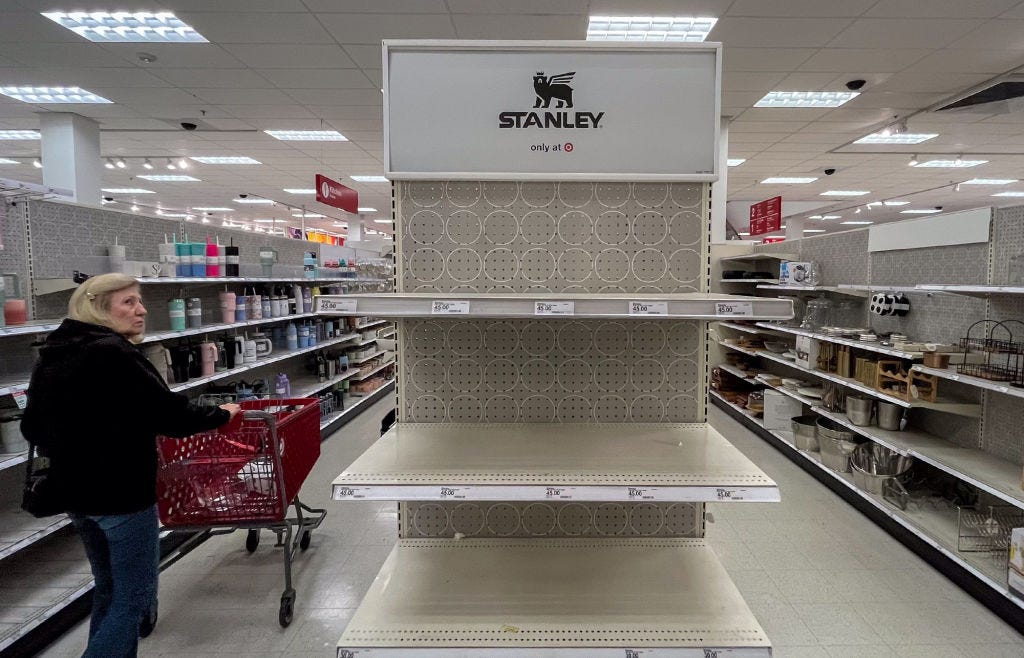
But here’s the thing. Most of the backlash against Stanley cups doesn’t name diet culture as the underlying problem. It blames girls. This TikTok creator and others are now declaring that Stanley is over for Gen Z.Stanleys may still be profitable (the brand’s revenue increased $676 million from 2019 to 2023) but they can’t be truly cool if both millennial moms and tween girls love them. Even more, Stanley is getting eviscerated for promoting overconsumption. Reusable water bottles were invented to reduce our plastic dependency, but if you keep buying new water bottles every few months, you clearly aren’t actually reducing much of anything.
That said, when I talked to Rebecca Seal, journalist and author of Be Bad, Better: How Not Trying So Hard Will Set You Free, about Stanleys, she pointed out that we don’t see the same handwringing about overconsumption when men line up for a new iPhone or sneaker release. “There are ways in which women, in particular, get quite controlled about these things,” she said. When women covet a particular consumer good, Rebecca argues, we are more likely to dismiss it as unhealthy or vapid. “There’s this notion that we’re engaging with these things without thinking about their consequences.” As an experiment, think quickly: What’s your knee-jerk response to Lululemon leggings, or (reaches back to our youth) Ugg boots or those boxy Kate Spade tote bags?And are you sure you’re equally as dismissive towards Carhartt hats, or limited edition New Balances—or for a more apples-to-apples comparison, Yeti bottles?
Real talk, the Yeti marketing execs would kill to inspire the kind of feeding frenzy that Stanley has pulled off. And the only difference in their approach (as another manufacturer of expensive insulated beverage holders offered in a rainbow of candy colors) is that they aren’t marketing quite so exclusively to women—and specifically to basic bitches. In collaborating with Target and Starbucks, Stanley has gone from army green to Barbie pink (literally). The brand has planted its flag in the land of pumpkin spice, Glossier cloud paint, and skinny jeans. Whether you deem Stanley cups a wild success, or want to claim they are already so over—both takes exist because of their deliberately gendered marketing.
So it’s interesting but not surprising, that after a year in which Taylor Swift, Beyonce and Barbie held the American economy together, we’re seeing a lot of Internet eye-rolling about the women and girls who love Stanley cups. Whenever we are reminded just how powerful women are, especially as consumers, we just as quickly reach for reasons to denigrate their interests and purchases.
But we need to find a better way to critique these marketing tactics. You can be a person who calls your reps to demand a ceasefire and a person who owns a Stanley cup and these two facts do not cancel each other out. When we rush to pick apart any demographic's love for a certain consumer item, we forget that they are not a mindless monolith. Moms and tweens are people. People are complicated, and so is consumerism. As
noted on last week, it’s a privilege to participate: “When you grow up in poverty, there’s nothing in your mind that says, Even though I can’t get these things, I’m still worthy of them. The protective approach you develop is to NOT want anything.”It’s also a privilege to stop shopping, as I’ve written before, and as we explored last week on
. You need to have a body that never changes size. You need to be able to afford very high quality clothes and housewares that won’t fall apart and require replacing. And you need to have a life that doesn’t sometimes need to be made a little bit softer or easier by virtue of a new Target haul. $45 is a lot for a water bottle, but it’s a more affordable luxury than a new car, or a vacation.When we ignore all of that, and frame overconsumption as a question of individual choices and willpower, we’re invoking a diet mindset to solve capitalism just like WaterTok applies a diet mentality to hydration. Both reframe coping strategies as vice. Both require us to make perfect choices all the time, which nobody can ever do. One ideal — less waste — may feel worthier to us than the other. But the behavior demanded is still restriction. We have still been set an expectation of perfection that doesn’t give us any credit for the good things we’re already doing, and asks us to build a world that won’t have any room for our mess.
Meanwhile, Katherine texted again just as I was finishing up this piece: “Virginia. VIRGINIA. After all that. She just used her gift certificate to buy kitty stickers and slime instead.” Maybe Stanley cup trend died in the time it took me to write this essay? Or maybe the average 11-year-old is smarter than the marketing gurus conspiring against her. Either way, the girls are gonna be alright. Let’s let them hydrate and think for themselves.




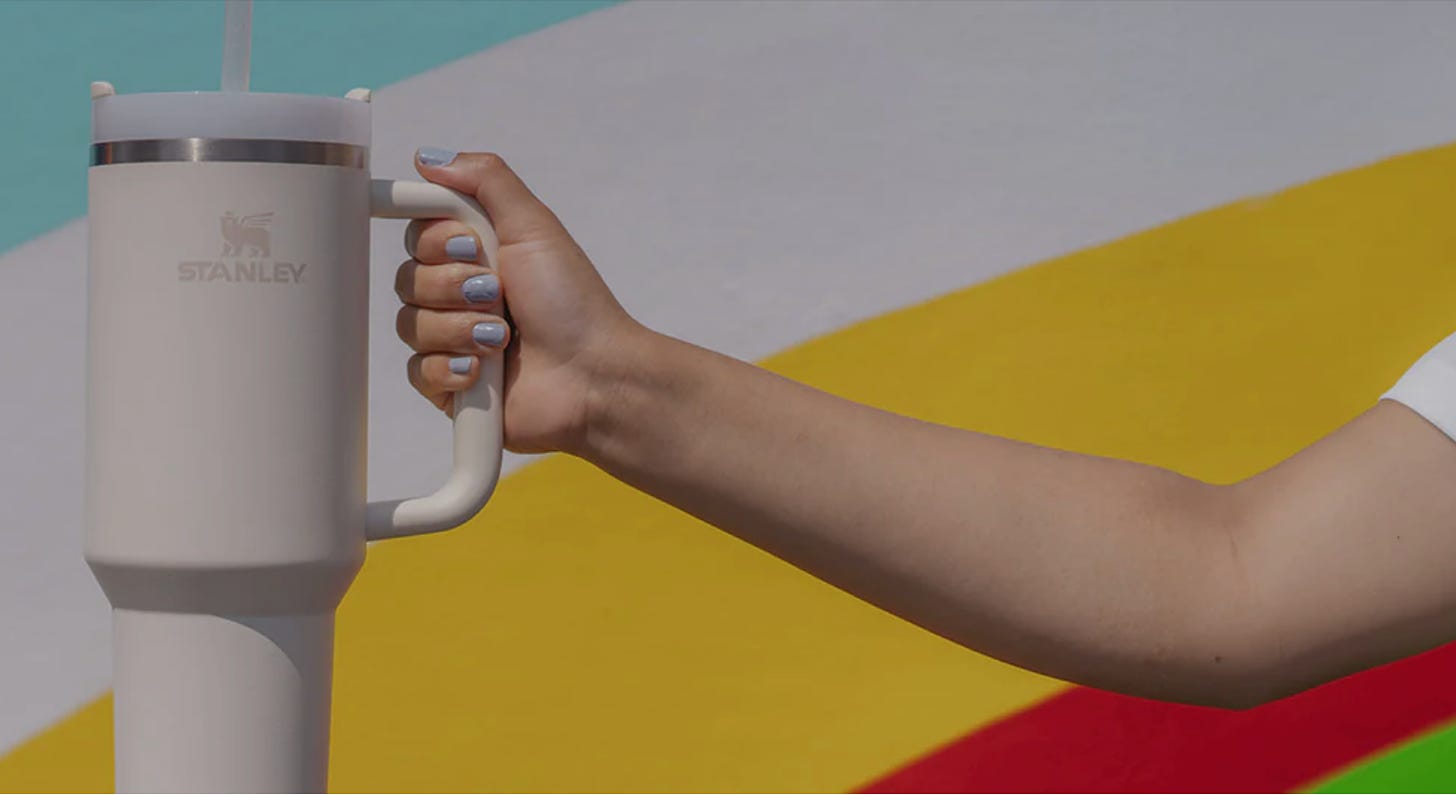
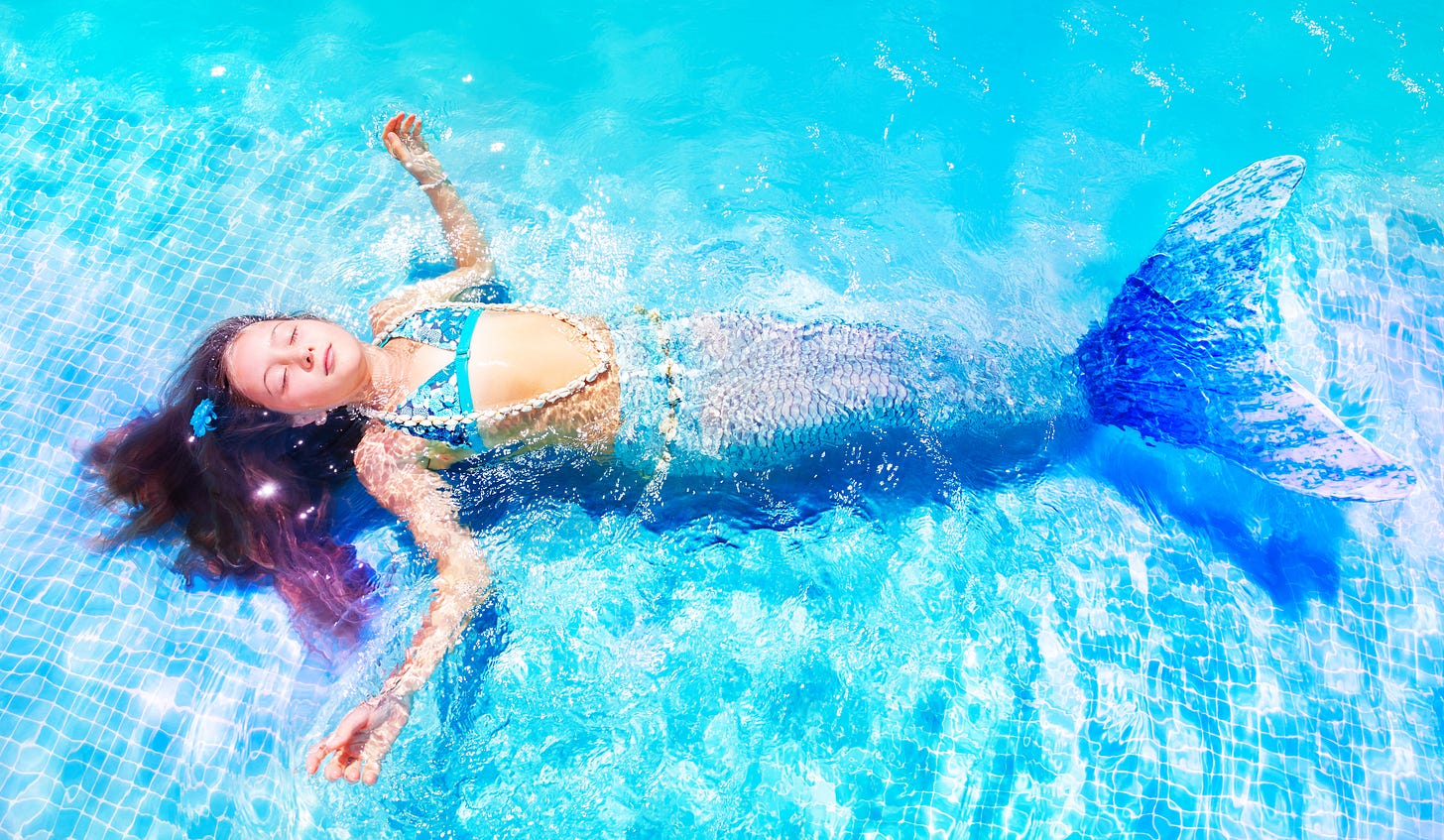
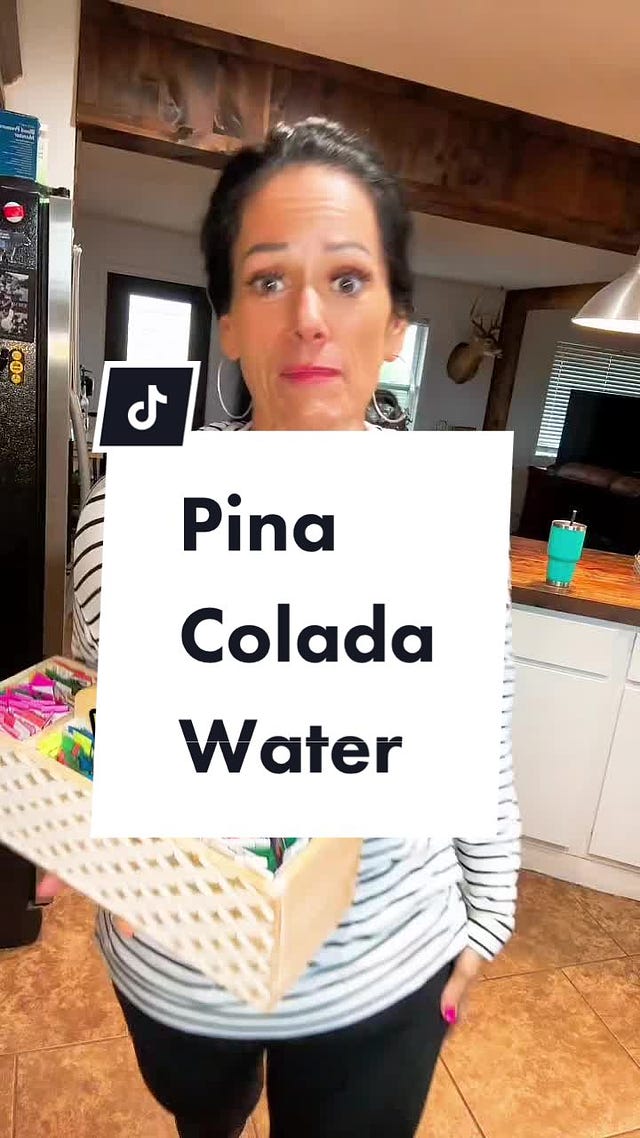

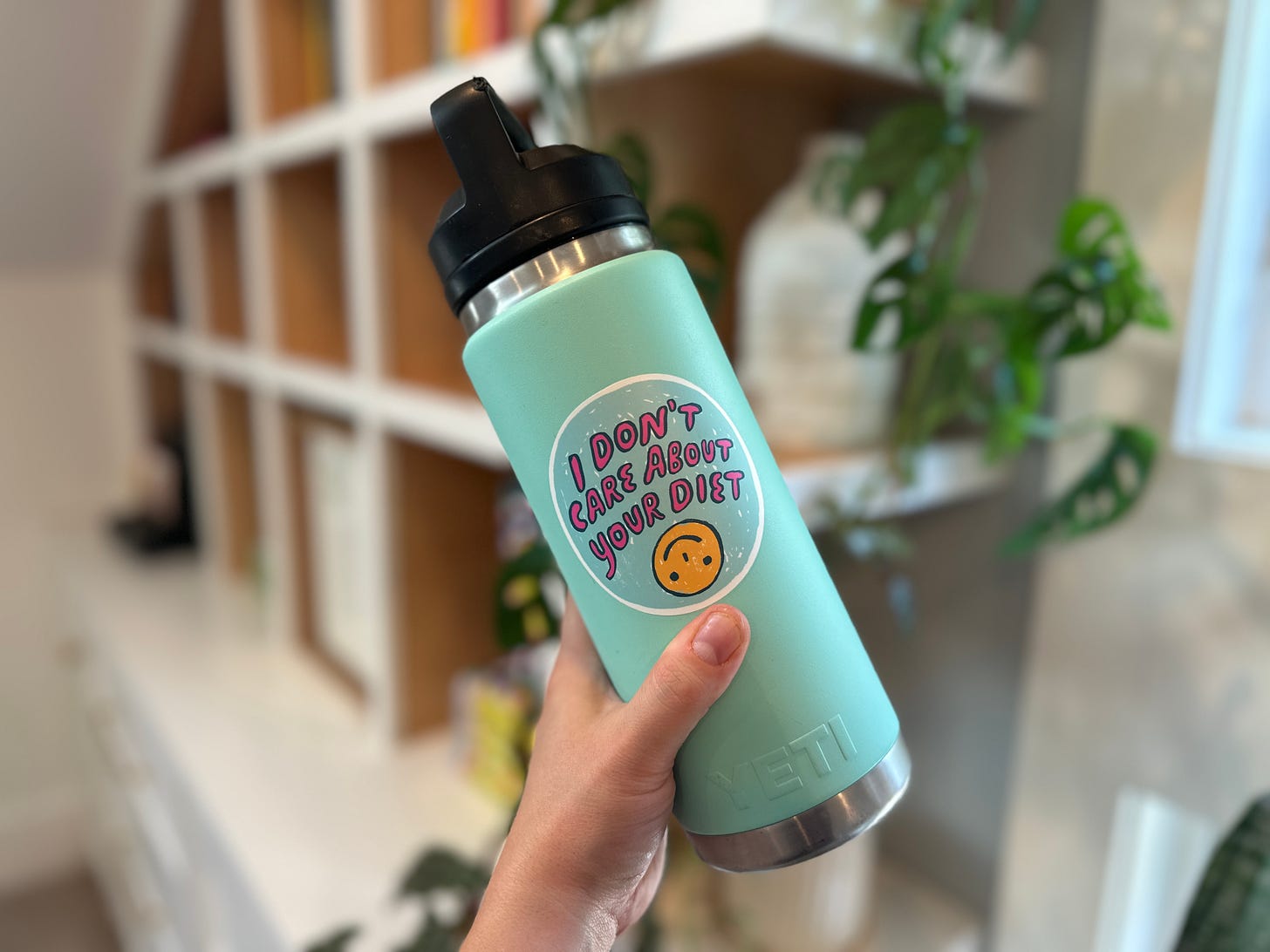
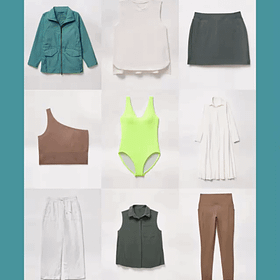





Recently I told my children about the "before time", when all the little children, myself included, went to school, sports, etc WITHOUT a single water bottle in tow. Aghast, they asked how on earth we drank water. Oh, the horror on their little faces when I replied, "We lined up at the water fountain for a few sips". Seriously, we have lost the plot on liquid consumption, great article.
Here is one additional thought on the Stanley craze - it is also something that is size neutral. If you are a larger body kid or teen, you can still be on trend by buying one of the cups and there is some value in that (and lord knows I'd rather this be the hot trend for my daughter's crowd than Lululemon leggings again).